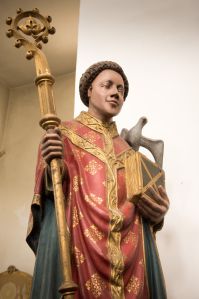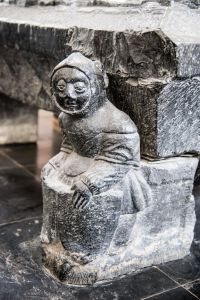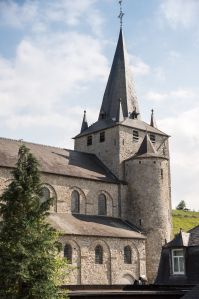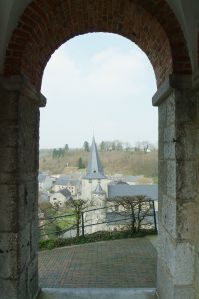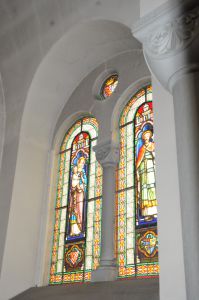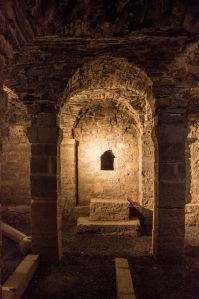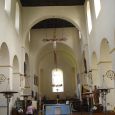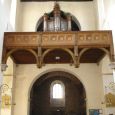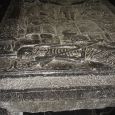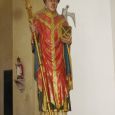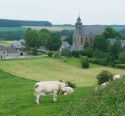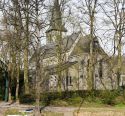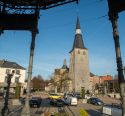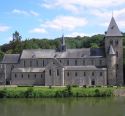Collegiate Church | XI | Romanesque | Catholic Church


Map
Opening hours
01 April - 31 October
Mon 9.30 - 18.00
Tue 9.30 - 18.00
Wed 9.30 - 18.00
Thu 9.30 - 18.00
Fri 9.30 - 18.00
Sat 9.30 - 18.00
Sun 9.30 - 18.00
01 November - 31 March
Mon 9.30 - 17.00
Tue 9.30 - 17.00
Wed 9.30 - 17.00
Thu 9.30 - 17.00
Fri 9.30 - 17.00
Sat 9.30 - 17.00
Sun 9.30 - 17.00
Guided tour
daily 9.30 am - 6 pm
asbl Tourisme et Culture de Celles +32 497 30 73 34
Religious offices
Sunday 11 am
Description
There are many good reasons for visiting this collegiate church. It is one of the most beautiful primitive Romanesque churches in the country. Moreover it is listed as a major heritage site in Wallonie.
One can admire its imposing mass, notably its defensive tower. Inside the building is whitewashed, with beautiful 13th century wooden choir stalls where the canons used to sit. There are two crypts dating from the 7th and 12th centuries, stone tombs, of which those of the aristocracy of the area, the de Beauforts and the de Liedekerke-Beaufort, 13th century baptismal fonts and many beautiful statues of which those of Saint Hadelin who lived here in the 7th century.
A disciple of Saint Remaclus, Saint Hadelin christianised the region and founded a monastery. Many miracles being attributed to the saint, the village became an important pilgrimage site and the monks built this collegiate church in the 11th century and it has been changed little since. The memory of the saint lives on in the village as it is celebrated annually on the 3rd February or on the Sunday that follows.
Finally the surroundings of the church are very pleasant: some fine village houses close by, an attractive stream, dominating the site, a building that used to be a Hermitage, opportunities for walks all justify the selection of Celles as “one of the most beautiful villages of Wallonie".
Les Plus Beaux Villages de Wallonie
Photos
Media
Remarkable elements
The nave
The nave has a length of about 20 meters and is divided into 5 bays by a row of 4 quadrangular pillars, each without a bassement and bordered at the top with a simple arch support of the column plate, starting from the full arches.
The main aisle is twice as high as the two small side aisles and twice as wide.
The lighting comes from two rows of medium sized windows without decoration and in a round arch.
The beech and the crossing with the transept are covered with an attic of joined planks, which is typical of early Romanesque churches.
In the front part of the choir one can admire a beautiful choir stalls, which is very simple and dagtekent from the 13th century.
The west crypt
The ribs of the vault are supported by 4 pillars which, in 1595, replaced 4 octagonal marble columns of Ottoman style, one of which can still be admired on the floor. On the eastern wall there is an opening of a deep niche whose dimensions correspond exactly to those of the shrine of Saint Hadelin. The rough finish of the structure at the level of the towers is striking. This is the oldest part of the monument and the northern wall is 1.80 m thick.
The tower
It is composed of a part of the back choir, the balcony, a third landing and it is actually a defensive tower. Proof of this are the numerous loopholes.
The back choir serves as a baptistery. On both sides are the doors that do not give access to the turrets.
The great arch was created in 1868.
Above the back choir, a balcony, then dedicated to St Michael, defender against the forces of evil. Originally, this great arch did not exist.
The gravestones
In the building there are several tombstones, one of which is walled in, day-drawn from the 15th century. He represents Louis de Beaufort, fully armed, and his wife Marie de Boulant. Another tombstone in the floor (2.35m x 1.45m) in black Dinant marble, carried by 4 caryatids and sculpted in bas-relief: in the middle stands Jesus on the Cross, on the right the Blessed Virgin who lays her hand on the deceased (Louis de Beaufort) and on the left St. John, who assists the deceased lady Marie de Cottereau.
The Eastern Crypt
Half buried, it is vaulted with ribs and divided into 3 naves by 4 pilasters and half columns in the walls. It gets light through the loopholes on the level of the cemetery. On the east side there is a rather simple altar. It is here that the pilgrims of the 11th century came to repent.
Statue of Saint Hadelin (15th century)
Born in Aquitaine, pupil of Saint Eloi and companion of Saint Remaclus, Saint Hadelin is a monk-missionary, arrived in Celles in 669. He founded a monastery there.
When he dies in 690, his fellow-brothers put his body in a shrine that they build into the western crypt of the church. Several miracles were attributed to the saint and the village became a place of pilgrimage. Soon it will be 1000 years ago that his disciples built a church as we know it today.
In 1337, the monks fled from Celles to Visé, near Liège, to settle in a refuge house because of the difficulties caused to them by the Lords of Celles.
Nearby
Circuit
Pilgrimages and legends

Detours and other pilgrimages in Namur (loop 5) - This tour takes you in the footsteps of two pilgrimages that were very important at the time: one goes back to the Middle Ages and the other to the 17th century. What do they have in common? The coming of the great ones of this world to pray and meditate.






